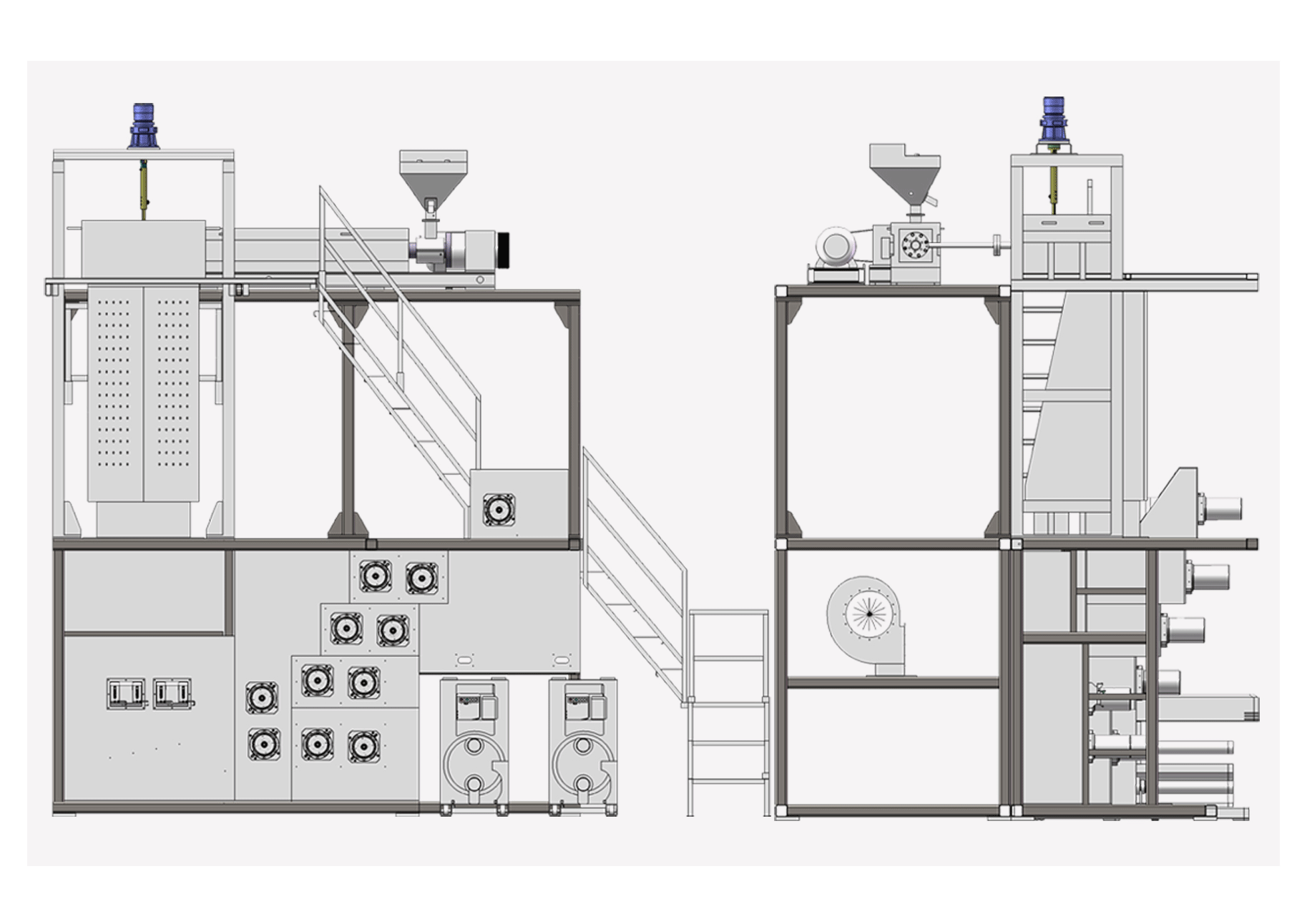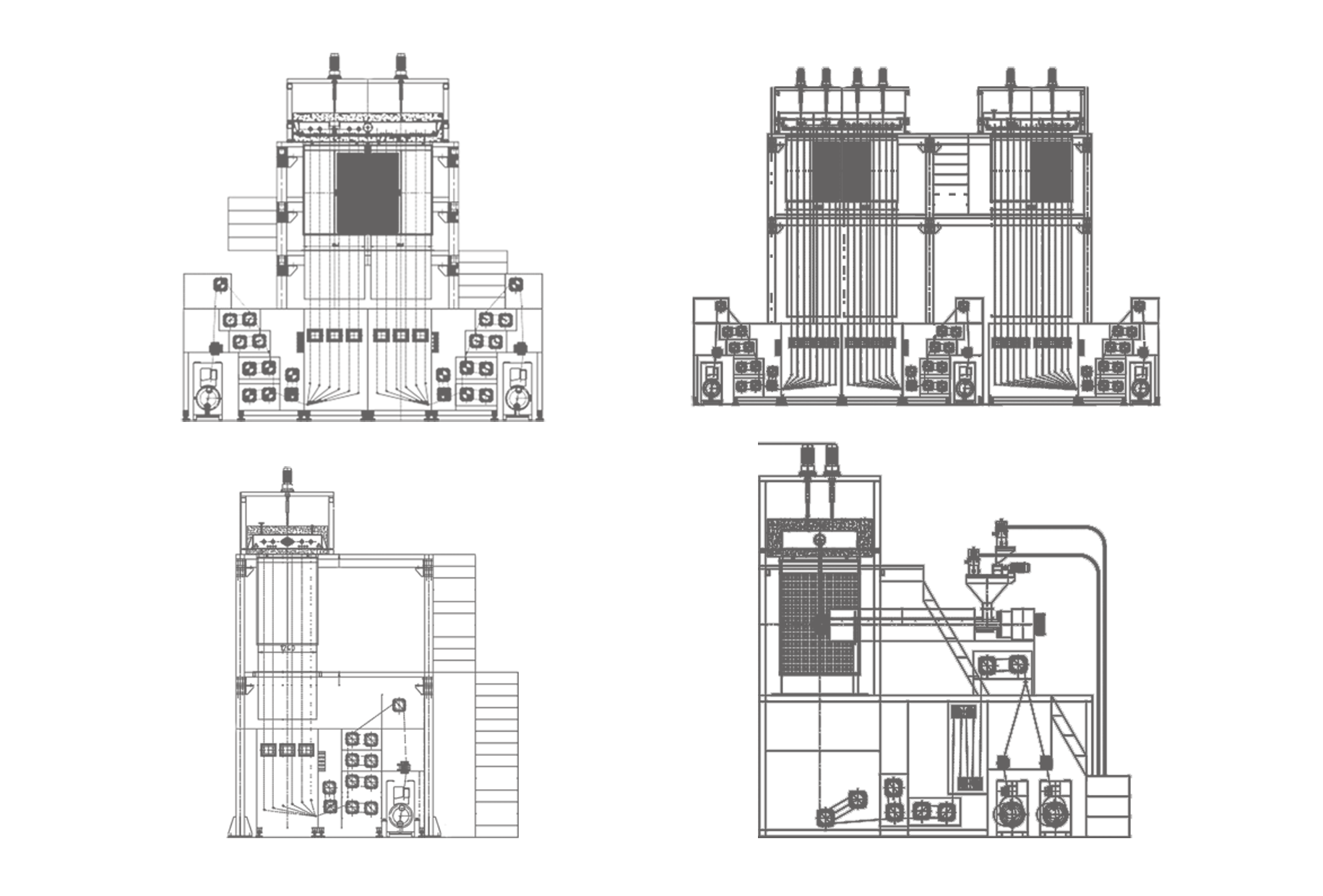

Polypropylene fiber spinning process brief introduction

1, melt extrusion
PP material are fed into the screw extruder through the feed port. Due to the rotation of the screw, the PP material moves forward along the screw groove, and the heating element is installed outside the screw sleeve, and the heat is transmitted to the slice through the sleeve; At the same time, the friction between the slices in the screw extruder and the extrusion produce a certain amount of heat. The slices are heated and melted, and are compressed by the extruder to have a certain melt pressure.
2. Mix
The screw presses the melt into the spinning box, thereby enhancing the uniformity of the melt
3. Measurement
The distribution pipe is distributed to the metering pump of each spinning part for metering, so as to ensure that the linear density of the silk strip is consistent and the dry strip is uniform. At the same time, the metering pump can pressurize the melt to meet the needs of high pressure spinning.
4. Filtration
The impurities in the melt are filtered by filter materials such as filter screen in the spinneret assembly. In high pressure spinning, the filter layer will produce higher resistance, so that the melt friction heat, temperature rise, improve the rheological property of the melt.

5. Spinning
After filtration, the melt is distributed by the distribution plate to the various spinneret holes on the spinneret, and spit out from the spinneret holes to form a trickle of melt.
6, cooling forming
The process in which the melt stream is cooled by the cooling medium and solidified into yarn strips is called cooling forming. At the same time of cooling, due to the stretching effect of the spinneret, the melt trickle is gradually refined before solidification. The cooling forming is completed in the spinning window, and the cooling air forced by the wind window at the upper end of the spinning tunnel can ensure the uniform cooling conditions.
7. Apply oil
Because the primary fiber is dry, it is easy to generate static electricity, and the holding force between the monofilaments, the filament is loose, and the friction coefficient is large, and it cannot be processed after processing. Therefore, the silk strips should be oiled when spinning. Although the oiling position is different when spinning with different processes, the purpose of oiling is to facilitate the bunching of silk strips, reduce static electricity and improve smoothness. Conventional spinning uses oil on oil tankers. The cooled silk strips are oiled in contact with oil tankers before reaching the winding machine through the passage.
8. Winding
The winding machine. After changing the direction and adjusting the tension through the upper and lower guide, the oiled yarn strips are wound on the bobbin by the cross guide. The tube and the friction roller on the winding head contact with a certain pressure, and maintain the same linear speed through friction transmission, which is the spinning speed. The winding tension has influence on the forming and reducing tension of the bobbin. Winding tension, overfeed rate and oil agent are three important factors in winding forming.
 Next: spinning workshop
Next: spinning workshop